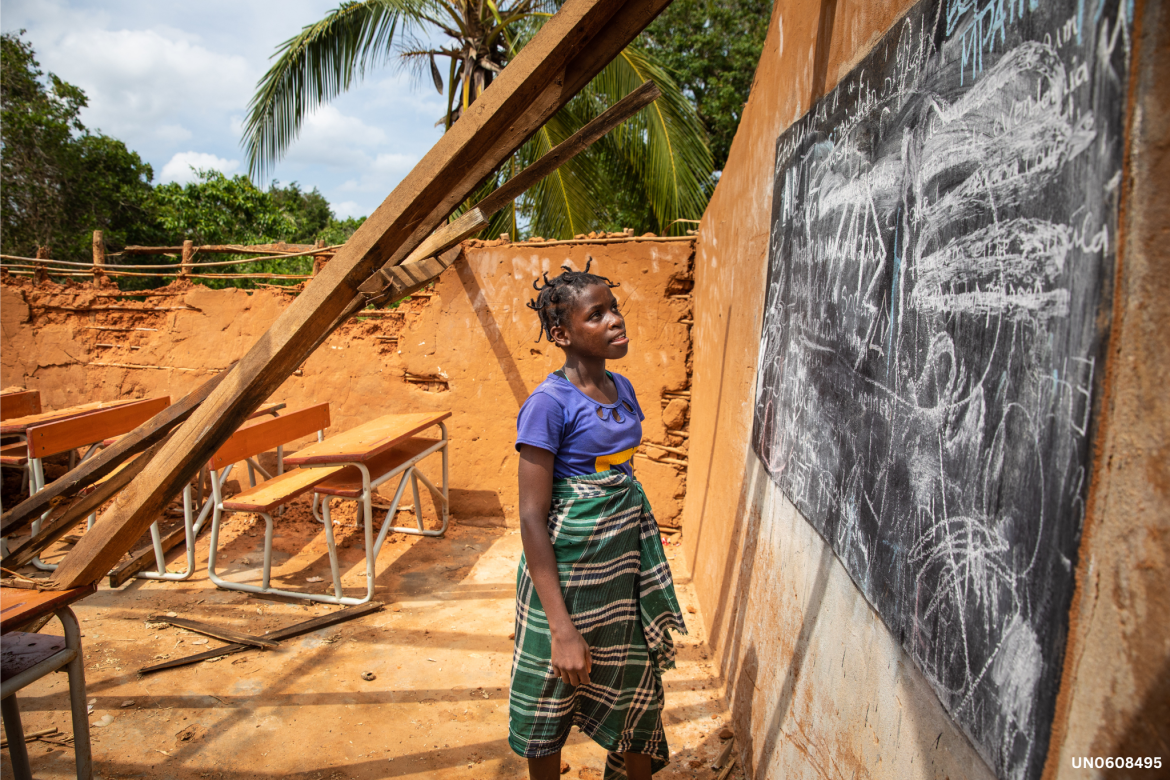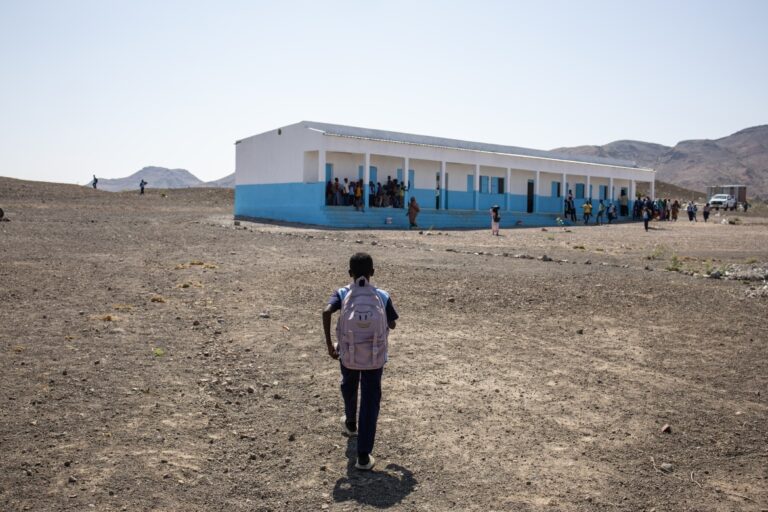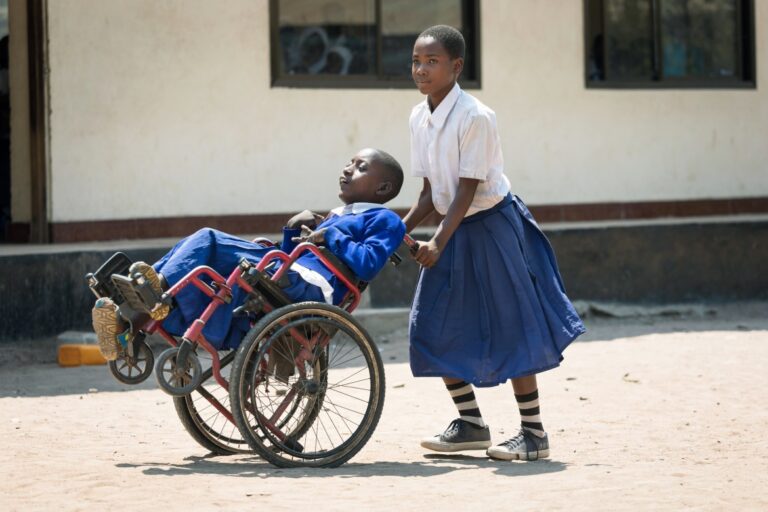The Geneva Global Hub for Education in Emergencies (EiE Hub) has released the first report on how climate change affects learning for crisis-affected and displaced children and youth, identifying how the sector is responding and proposing additional opportunities for climate action.
Climate change worsens existing inequalities and vulnerabilities, threatening the right to safe, equitable, inclusive and quality education for children and youth already left the furthest behind. This includes children and youth affected by conflict, disasters and displacement, and minority groups, including girls and children with disabilities.
Climate-induced shocks – floods, droughts, fires and extreme heat – further increase the challenges to providing safe and continuous education for all children and young people.
Worldwide, some 224 million children and young people are missing out on education, and the figures keep rising.
The climate crisis is an education crisis. This is why the EiE Hub’s Flagship Report for 2023 – following on from a report on EiE financing in 2022 – takes a detailed look at EiE and climate change, and explores their connection.
Connecting the climate crisis and education challenges in emergencies
Building on existing research that explains how the climate crisis adds to risks of disasters, conflict and violence, and increases learning losses, the report identifies 6 main areas for how climate impacts on the provision of quality education in emergency situations – meaning, learning environments which provide opportunities to meet the physical protection, psychosocial, developmental, and cognitive needs of children and youth affected by emergencies:


In crises, the EiE community responds to the consequences of climate shocks on children’s and young people’s learning. This includes essential education support that can both sustain and save lives.
The EiE community works to ensure that education continues and learning environments remain safe. It actively helps education actors to prepare for shocks, reduce risks and build resilience.
Importantly, anticipatory action, that is a set of actions taken to prevent or mitigate potential disaster impacts before a shock or before acute impacts are felt, is gaining ground among EiE actors.
Collaborating with other sectors and considering connections between humanitarian work, development and peace, the EiE community has taken steps to include climate change and environmental concerns in its policies and strategies.
Key actions taken so far have included:


As humanitarian needs increase, there’s an even greater need to make conscious coordination between humanitarian, development and peace efforts a reality.
When GPE joined the EiE Hub as a member in 2023, this was an important positive step to achieving such a collaboration.
GPE’s framework for climate-smart education systems outlines how to achieve 3 important goals:
Ensuring fair and high-quality education;
Protecting the planet’s life systems; and
Promoting climate justice in lower-income countries.
GPE’s framework was written to respond to partner countries that expressed the need for support to address climate change in the education sector in a more systematic way.

More climate finance needs to be allocated to education, including in crisis contexts
Still, the promising work education actors do in emergencies remains critically and chronically underfunded.
As countries strive to create education systems that can withstand climate challenges, ensure quality education for all and secure every child’s right to a clean, healthy and sustainable environment, it’s crucial for governments, development and humanitarian donors and policymakers to both acknowledge and value the role of the EiE sector in local, national and global conversations, adaptation plans and funding.
This includes raising the proportion of predictable multi-year funding for EiE, involving directing funding to reduce risks, prepare for emergencies, take anticipatory action and incorporate climate change adaptation and mitigation into EiE interventions.
Children and young people are taking leadership and demand support
It’s essential to recognize the important role children and young people play worldwide in responses to climate change. We need to support their strong desire to take leadership and contribute.
In crisis situations, children and young people have frequently taken on leadership roles and driven change in addressing climate issues, both in their schools and communities, whether through awareness-raising, community engagement, participation in international climate gatherings, child-led school strikes, peaceful demonstrations, or nonviolent civil disobedience.
Despite this, they are not consistently included in discussions about climate policies. Most importantly, there’s a pressing need to ensure children and youth are prioritized in emergencies and are supported in their right to participate in and influence education and climate decision-making.
The role of the EiE Hub
The EiE Hub was launched in January 2021 to take on big challenges in the EiE sector and generate new knowledge as part of a global community.
Its 44 members, in addition to GPE, include governments, international organizations, non-governmental organizations, academic institutions and funds. Each bring their own unique mandates and strengths to the mission of ensuring safe, quality education for all children and youth affected by humanitarian emergencies, protracted crises, displacement and migration.
They are all aware that delivering on Education in Emergencies is indispensable to reach Sustainable Development Goal 4, with crisis-affected and displaced children and young people consistently losing out on continued quality learning.
These members have come together to take unified action. They recognize the shared urgency of addressing the climate and education crises and are committed to pooling resources and efforts to make the greatest possible impact.
With the climate crisis bringing new layers of complexity and ever-increasing challenges to the EiE sector, it is ever more apparent that the path to ensuring the right to quality education for all crisis-affected children and youth is found in working across a nexus of humanitarian, development, and peace partners which includes climate change and environment actors.






